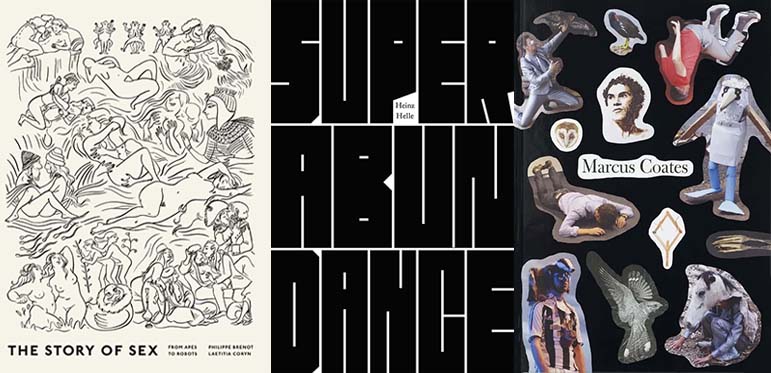Why Does Cover Design Matter?
 In the space of a second spent looking at a book’s cover, we reach certain conclusions about its content. From the typeface to the colors, from the position to the size of each visual element, an internalized pool of knowledge built on years of reading experience gives us a clue as to how serious/funny/strange the book is likely to be. This happens more quickly than we can articulate. It’s also one of the few things that humans can still do better than robots, according to Japanese computer scientists.
In the space of a second spent looking at a book’s cover, we reach certain conclusions about its content. From the typeface to the colors, from the position to the size of each visual element, an internalized pool of knowledge built on years of reading experience gives us a clue as to how serious/funny/strange the book is likely to be. This happens more quickly than we can articulate. It’s also one of the few things that humans can still do better than robots, according to Japanese computer scientists.
These visual signifiers are useful for readers who want to know what they’re getting, of course. But they’re also important for the marketing of books. Booksellers need to know where to place books in their shops. While press releases and book jackets often come with information as to genre and intended audience, covers can often provide that information at a glance. Others involved in the book publicity industry—reviewers, bloggers, publicists, and curators of lists—also depend on this. Book publicists recommend, for example, that books in a specific genre share certain visual traits with other books in that genre, to attract the target readers.
For instance, crime books, both novels and true crime, tend to come in dark colors, often with stark, all-caps lettering. Women’s popular fiction is the opposite: bright and colourful, frequently pink, using both uppercase and lowercase, and featuring images of fashion items or fashionable women. Sci-fi and fantasy sometimes have certain icons of the genres (mythical beasts or spaceships), and sometimes very busy covers.
More worryingly, design tropes can lead to erasure of diversity. Children’s books have been notorious for putting white people on book covers, even when the protagonists are non-white. A notable example is Justine Larbalestier’s Liar, about a black girl who is a compulsive liar. The advance reading copy pictured a white girl, and the controversy over this led to a different cover, featuring a black girl. There have been signs of change in recent years, but the kerfuffle over cover whitewashing shows authors’ lack of control over cover decisions, and publishers’ often misguided notions of how to package books.
As the world of publishing quickly changes, so do these patterns—tropes continue to arise from design trends that persist beyond their newness. New tropes, like headless characters in YA fiction have abounded recently. A popular example is the “objects as foreplay” trend popularized by the 50 Shades of Grey books, where items associated with soft BDSM, such as a mask and a set of handcuffs, are pictured on romance covers. The bandwagon of 50 Shades-style books shows how tough it can be to strike the right balance between using modern design, demonstrating through design that a book fits into a certain genre, and becoming over-reliant on tired clichés.
The faddishness of some design ideas means that modernizing a cover can immediately make a book seem refreshing, as made clear by the Classics/Reissues titles shortlisted for the Academy of British Book Cover Design awards. (I also appreciate the modern graphic novel-style covers of Penguin classics, like Frankenstein reimagined by Daniel Clowes). One trend, also apparent from this academy’s shortlist, is the minimizing or even obscuring of titles or authors, as design becomes ever more abstract. In particular, literary fiction in recent years has tended toward abstract, uncluttered covers. This appears to be part of a larger design trend towards minimalism, as a counter to some of the florid design of previous decades.
These trends, which are followed for success in sales and reader recognition, have other outcomes—the ease with which designers make their books categorizable also means that readers often make unfair assumptions about their content. Take, for example, the covers of Elena Ferrante’s books. They’re bound by placid, pastel scenes that are in contrast to the intensity of her writing. Her books are concerned with domesticity and the emotional lives of women, yes. Book designers appear to have leaned into the association of women’s emotions with romance, although the turmoil of Ferrante’s characters defy that genre label.
The design also evoked sexist and elitist remarks from reviewers. A Quartz article, for instance, comments that these books “feature a baffling aesthetic, evocative of nothing so much as a $4 romance book found in an American gas station,” implying that books typically marketed to women are lowbrow, and couldn’t possibly be worth reading.
Whether these judgments were fair or not, they reinforced the importance of cover design to the way readers approach books. This appears unlikely to change anytime soon.


